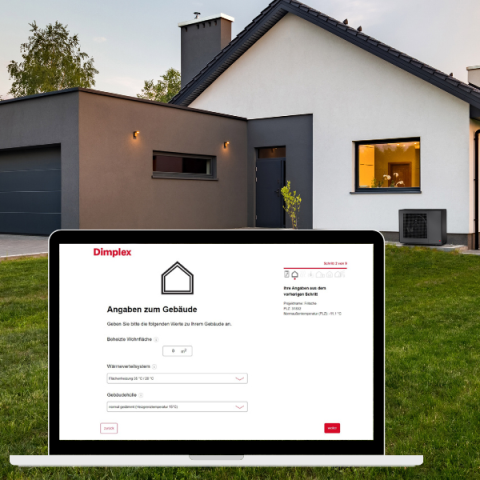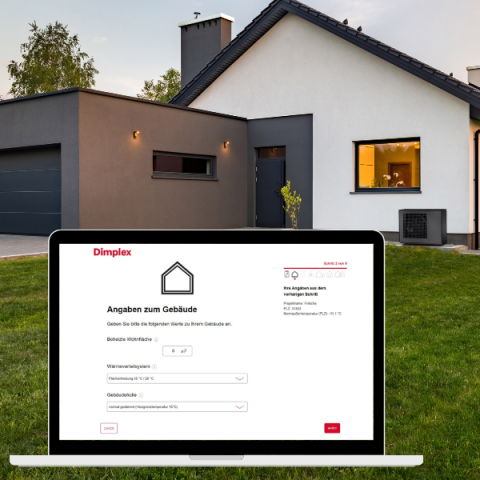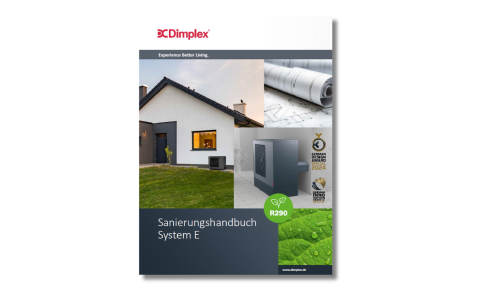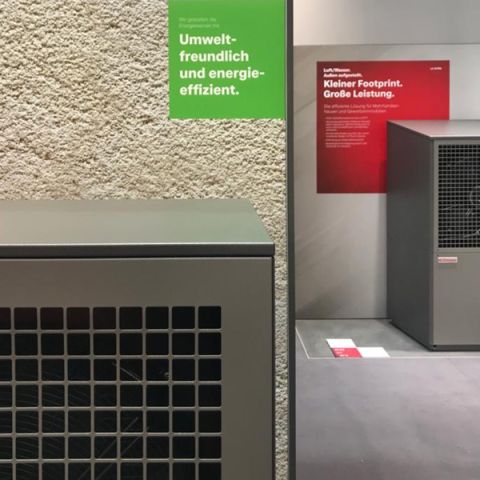
Everything About Infrared Heating
Everything About Infrared Heating
Specific, pleasant warmth at the touch of a button that feels like sunshine: Infrared heating provides an exceptional feeling of warmth in private homes, but also in offices or production halls. You can find out everything about modern infrared heating in this article.
How does an Infrared Heater Work?
Types of Infrared Heaters
Advantages and Disadvantages of an Infrared Heater
How Much Does an Infrared Heater Cost?
Where do you Use an Infrared Heater?
When Does Infrared Heating Make Sense?
Where do you Install an Infrared Heater?
Design of Infrared Heaters
Maintenance of an Infrared Heater
How Does an Infrared Heater Work?
An infrared heater is an electric heater, also known as a radiant heater or thermal wave heater. The highlight: It does not heat the air, but rather radiates the heat directly onto the objects, surfaces and of course people who find this type of heat particularly pleasant: it does not make the air in the room dry and does not stir up dust and instead literally gets under the skin, where it creates a pleasant feeling. Furniture or surfaces can also store the heat available from the infrared heater and release it back into the room. This is a welcome effect, especially when installing on a ceiling in conjunction with a tiled floor – more on this below.
Infrared radiators for use in living and working spaces. These flat heaters (approx. 2.4 cm deep) can be mounted on walls or the ceiling and provide pleasant warmth throughout the heating period or in between.
Advantages
- Immediate heat at the touch of a button: An infrared heater only needs about 5 minutes until it can work at peak performance and provide you with pleasant warmth.
- High efficiency: The infrared heater converts the electricity almost completely into heat.
- Easy installation: Hang on the wall or ceiling, connect to the socket, done.
- Less expensive to repair or replace: Any spare parts or a new heater cost much less than comparable parts for conventional heating systems.
- Almost maintenance-free: In contrast to conventional heating, an infrared heater only needs to be dusted/wiped down as part of normal cleaning work.
- Pleasant, direct warmth: Feels like the sun's rays, which most people find particularly pleasant.
- Can be used as design elements: The modern infrared heaters are available in various designs that can be integrated into the interior planning.
- No stirring up of dust: No air is circulated during heating, which is particularly ideal for allergy sufferers.
- Sustainable: When purchasing green electricity, an electric heater such as infrared heating is the most environmentally conscious way of heating.
- No overheated rooms: Since the infrared heating only warms up the objects and people in the room, the room itself is not overheated - this increases well-being enormously.
- Smart home compatible: Most infrared heaters can be integrated into smart home systems, allowing for even more efficient and targeted use.
Disadvantages
- Possibly higher operating costs: Electricity is one of the expensive types of energy, which is why electric heaters such as infrared heaters should be used in a well-planned manner.
- Less suitable for poorly insulated houses/apartments: An infrared heater also warms walls, which in turn release the heat into the room. If the wall is poorly insulated, the heat also escapes to the outside, which reduces the heating effect.
- No government subsidies: Electric heating is not subsidized, even in new buildings.
Where do you use an Infrared Heater?
Radiators with infrared radiation can be used anywhere where heat needs to be available selectively and at the push of a button. This can be the case in the living room as well as at work. Rooms that are only used sporadically are ideal for infrared heating. Allergy sufferers appreciate the fact that no air is circulated during heating: no dust is stirred up, which makes breathing much easier during the heating period, which is already stressful for the respiratory tract. Infrared heating is only recommended as full heating in well-insulated houses, usually in new buildings. Unfortunately, in old buildings the efficiency of the heating is usually not particularly high; here, the focus is on selective, short-term use, for example in the guest bathroom.
In rooms that are used irregularly: Be it a guest bathroom or a caravan - there are rooms that are not used regularly or in which conventional heating cannot be installed or the installation does not make sense. Then electric radiators that quickly provide heat are the right solution. You can use an infrared heater in:
- Guest rooms
- Guest bathrooms/toilets
- Garden houses
- Studios
- Winter gardens
- Rehearsal rooms
- Caravan
- Apartments
Wall Mounting the Infrared Heater
Radiators are traditionally mounted on walls - including infrared heaters. Since an infrared heater does not heat the air, but objects in front of it, it makes sense to hang the heaters where you regularly spend a long time: near the couch, your workplace or your children's play area. Thanks to their slim and unobtrusive design, many infrared heaters almost blend into the furnishings or background, while others can be used as a design element with their unique surfaces. Since infrared heaters don't get very hot, they can be used safely in children's rooms.
Ceiling Installation
The warmth from above is certainly unusual at first, but is very pleasant with infrared heaters: mounting the heaters on the ceiling ensures even more of the comfortable feeling of sitting in the sun. Another effect: the infrared heating also warms the floor. Depending on the covering, this acts like underfloor heating, especially if the floor is tiled and can therefore store heat quickly and for a longer period of time. If you want to use this effect, make sure that the infrared heater has a sufficiently high heating output - the rays must be able to easily overcome the distance between the floor and ceiling.
Ceiling installation of infrared heaters above sofas, in bathrooms and also in bedrooms is particularly popular. Of course, you can hang the heater directly above the bed - in winter there is nothing better than slipping into a warm bed.
Designs
An infrared heater can either heat your rooms inconspicuously or be installed as an eye-catcher. The inconspicuous heaters are our infrared metal heaters: Finished in elegant white, the heaters, which are just 2.4 cm deep, are perfect for purist interior design styles. Those who appreciate unusual designs will also find what they are looking for at Dimplex: On the one hand, we have the white textured metal radiators in our range: they also look very elegant and distribute the heat even better thanks to the textured look. On the other hand, our natural stone infrared appliances can be used perfectly as a design element: The modern combination of innovative infrared technology and real natural stone in two colours, snow and sand, provides pleasant warmth and is also a great highlight in your rooms.
Maintenance of an Infrared Heater
Many people know this: the chimney sweep comes once a year to check the heating system, the radiators have to be vented and cleaned again and again. All of this is simply eliminated with an infrared heater. We just recommend regular wiping to remove any dust that may accumulate on the top. You can do this as part of the normal cleaning of your rooms - done!
Conclusion:
An infrared heater is an optimal solution, especially for rooms that are used irregularly, well-insulated new buildings and for people with dust allergies. Anyone who loves the feeling of the sun's rays on their skin will also be really happy with an infrared heater. For everyone who uses pure green electricity – or produces it themselves – heating with infrared is also the most sustainable type of heating. Dimplex has a range of different infrared heaters that can be used in different rooms, both private and commercial.






